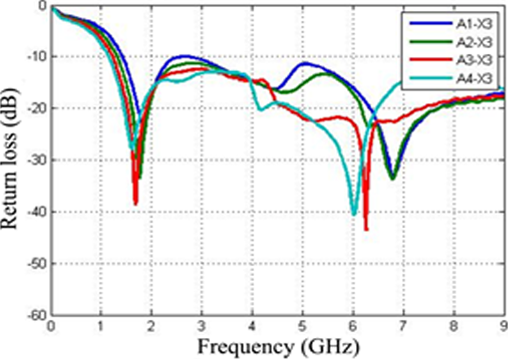Performance analysis of metamaterial antennas based on variations in combination and radius of hexagonal SRR
DOI:
https://doi.org/10.59190/stc.v4i1.250Keywords:
Antenna, Bandwidth, Hexagonal, Metamaterial, Split Ring ResonatorAbstract
The low antenna performance is a concern for researchers to overcome in modern technology. As an effort to overcome this problem, the application of the metamaterial structure to the antenna was carried out to increase the antenna parameters. This study aims to analyze the effect of antenna performance due to the influence of variations in the combination and radius of the SRR hexagonal metamaterial. The research was conducted in a simulation, starting with designing the antenna structure with the metamaterial of two rings into a resonator with a radius variation of 2.5 mm and 2.7 mm, then combining one to four hexagonal SRRs. The results showed that the highest antenna performance was obtained from a combination of four hexagonal SRRs for a radius of 2.7 mm with parameter values in the form of return loss -38.95 dB, a bandwidth of 7.88 GHz at a working frequency of 1.12 – 9.00 GHz and a gain of 5.92 dBi.

Downloads
Published
How to Cite
Issue
Section
License
Copyright (c) 2023 Yan Soerbakti, Defrianto Defrianto, Ari Sulistyo Rini, Vepy Asyana

This work is licensed under a Creative Commons Attribution 4.0 International License.










